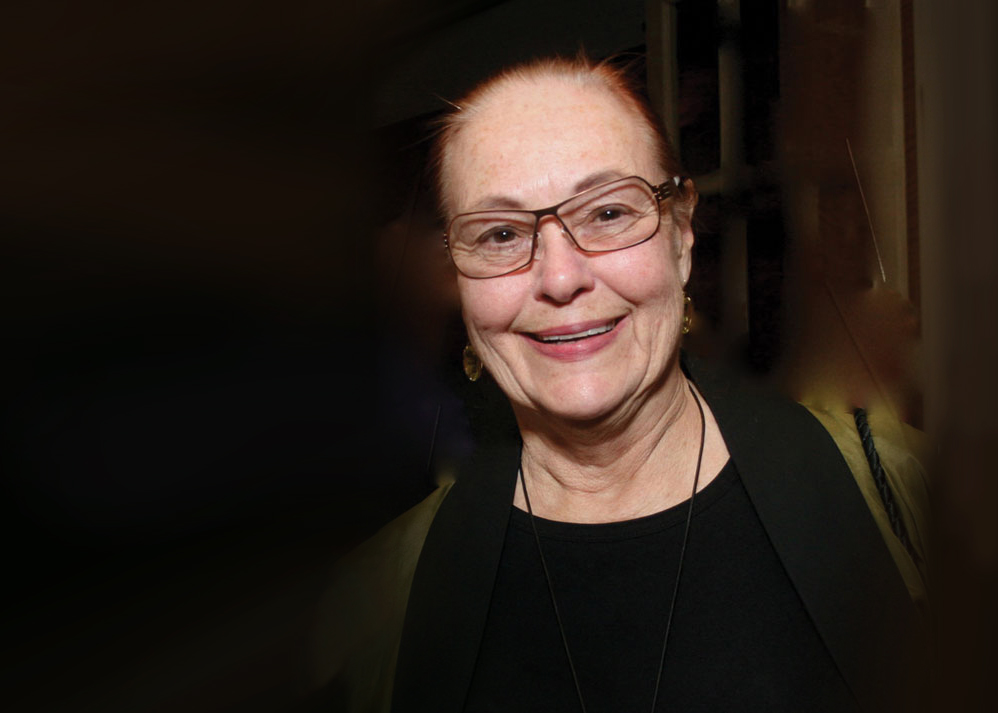“It’s all about accessibility and exposure,” explains Brit d’Arbeloff, SM’61, philanthropist, and advocate for STEAM (science, technology, engineering, arts, and math). With tenacity and a smile, Brit achieved pioneer status as the first woman to graduate from Stanford University with a mechanical engineering degree. She then made her way to MIT and pushed new boundaries, completing her SM in Mechanical Engineering in a culture that at the time was less than welcoming.
Brit’s love for MIT has grown over the years, as she saw the Institute from a different perspective when traveling and representing MIT with her late husband, Alex, who was chair of the MIT Corporation. Given her own challenges of proving herself in a male-dominated space, Brit has long been a champion for STEAM education and accessibility for all, especially for young women and girls.
As a young girl growing up in Oak Park, Illinois, she was always learning and exploring. Thanks to her parents, Brit was enrolled in the town’s arts programs, which exposed her to the visual arts, music, and theater. Since then, the arts have remained an important part of her life in Boston, where she is currently involved with many museums and cultural organizations, including the Council for the Arts at MIT.
Under the tutelage of her father, Ivar Jepson, an engineer and an inventor, she stood beside him and watched him build, create, and tweak, taking his ideas and bringing them to life. Brit recalls joining her parents and attending lectures and demonstrations held by the Swedish Engineers Society. She was awed by these events and left with so many unanswered questions. Even within the comfort of her family, Brit pushed the norm and clearly remembers her father erupting in laughter when she announced her plans to become an engineer. But years later, she recalls, “when I graduated with my SM from MIT, my father was beaming with pride.”
One of Brit’s first jobs took her to 238 Main Street, working for Northern Research and Engineering, where she did contract work for NASA and several other companies. Once again, she fought the norm and pressed for a seat at the table. She is thrilled to see that Kendall Square continues to be a place of innovation, and jokes that while “it’s different people, it’s still a hub of creativity and experimentation,” thanks in large part to MIT’s presence. With the growth of MIT and Kendall Square in this realm, Brit glows at the thought of the progress made for women in STEAM education and careers in this very same location, yet recognizes that there is more to be done.
She is enthusiastic about the presence of the new MIT Museum in Kendall Square, just around the corner from her first office and the new graduate housing dormitory for postdocs, which will include a childcare center. Brit sees the current Kendall Square development as a sign of the progress made. “These are both projects to improve accessibility. Why should a young woman have to choose: ‘Do I want to focus on my research or have a family?’ She should be able to do both.” In an effort to break down the barriers to accessibility even further, the museum will offer free admission to Cambridge residents, as well as programs for people of all ages and comfort levels with science. The museum will continue to host and expand its programs for an array of audiences, such as the ever-popular Girls Days, which feature talks and activities by women working in the STEAM fields, as well as programs for teens, families, and adults that will flourish and grow in an expanded space. For these reasons, Brit believes it is important to support the MIT Museum at Kendall Square project.
The MIT Museum celebrates the past history and current innovation of MIT, which makes it unique. However, what Brit really wants to emphasize is the museum’s role as a place to open up MIT to the world, especially to those people who don’t think MIT has a place for them. “There is a misconception that people have about science and technology, much like they do about the arts,” she explains. If they haven’t been exposed, they feel they won’t understand.” This museum is working to disprove that notion and to “take complex problems solved at MIT and share them with the world in a way that is relevant to people’s everyday lives.”
Brit was determined to find a place for herself at MIT—and in a STEAM career—and hopes that her story will encourage other young women to see that science and technology are within their reach.

